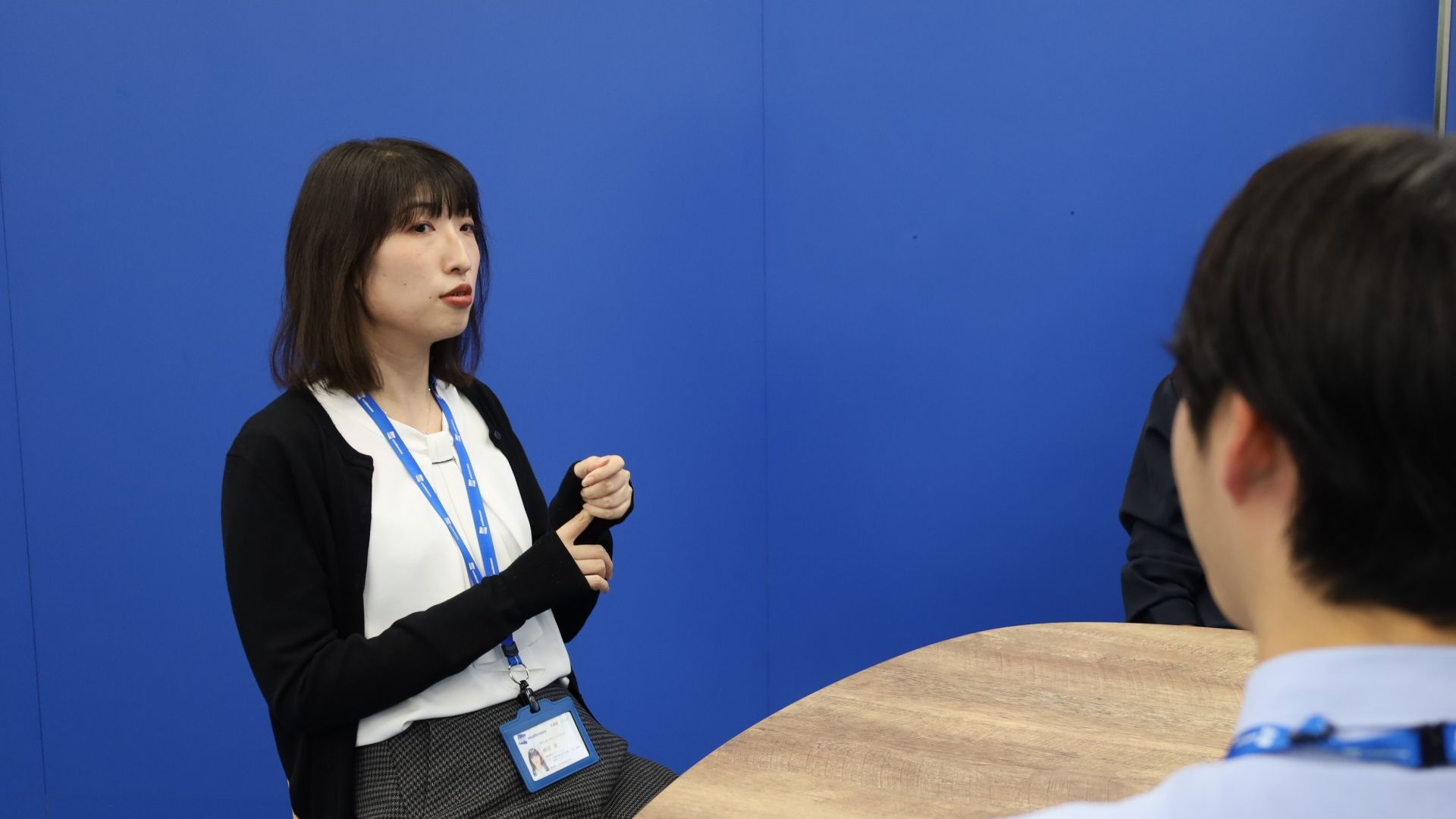November 6, 2025
Expert Tips: Making the Most of Autumn Foliage with Our App

At Weathernews1, we go beyond traditional weather forecasts and disaster alerts—we're passionate about helping people connect with the seasons through specialized weather content year-round.
Our autumn foliage coverage has become a standout favorite, especially among hiking enthusiasts, photographers, and outdoor adventurers. What makes this content special is the collaborative spirit behind it, with teams from across our organization working together to deliver the best possible experience.
We recently brought together experts from our Forecast Center and App Operations Team for an insightful conversation about this season's exciting new features and the passion that drives our autumn foliage project.
Forecasting Autumn Foliage: Daily Monitoring of 400+ Locations

PR Team: This summer was really hot, but it's definitely starting to feel like autumn now, isn't it?
App Team Kato: Yes, it's completely turned into autumn weather. Actually, we held an internal meeting in early July, gathering all the stakeholders to discuss how we'd manage this year's autumn foliage content.
PR Team: Starting that early?
Forecast Center Kakinuma: Yes. When we forecast the peak viewing periods for autumn foliage, how much the trees were affected by rain and wind during summer is also an important factor. From July to August, when heavy rains and typhoons start having an impact, we conduct our own field research by reaching out to managers at foliage spots to check things like how damaged the leaves are.
Kato: We're also getting feedback from our Weathernews app users. This year, we're seeing some deterioration trends in Hokkaido and Shikoku when it comes to leaf size and shape. But for the rest of western Japan, excluding Shikoku, we haven't received reports of trees in extremely poor condition. At the end of the day, local voices are our most reliable source of information.
Kakinuma:For autumn foliage forecasting, we pay special attention to temperature patterns. Leaves typically start changing color when temperatures drop below around 8°C, and the process really picks up once it hits about 5°C. Sunlight exposure also has a significant impact. We take all of this into account—leaf conditions, temperature, and sunlight—to make our comprehensive assessment and calculate the peak viewing dates.
Even now, as we're getting closer to peak season, we keep up our field research.At our busiest, we make up to 400 calls a day to collect on-the-ground information. We work closely with tourism associations, local government offices, and site managers to monitor how the leaves are progressing. We'll call each location individually and ask, "How's the color change looking?" When we hear back things like “They’re at their most beautiful right now!” It really makes our day. I'm getting excited knowing that foliage season is about to begin again.
Forecasting 1,200 Locations This Year! What Makes Weathernews’ Autumn Foliage Coverage Unique

PR Team: What makes Weathernews' foliage information unique?
App Team Migiume: We've been collecting and building a database of autumn foliage photos since 2012—that's over 14 years of accumulated data now. Using this extensive photo archive for our forecasting is something that's uniquely Weathernews. This year, we're taking on our biggest challenge yet: forecasting foliage for a record-breaking 1,200 locations! We're the only service in Japan that can provide coverage for over 1,200 famous autumn viewing spots.
Kakinuma: Many of the newly added locations actually came from suggestions by our app users—they've been incredible in helping us discover hidden gems. To handle forecasting for 1,200 locations, we've had to get creative, introducing automation for some processes that used to be done manually. We also revamped our weekend recommendation system to make sure we never miss featuring the most popular destinations.
On another note, our Weathernews LiVE program features a segment called "100-Year Weather Forecast" that looks at climate change impacts. We actually presented a foliage forecast for the year 2100, and it was eye-opening to discover that continued global warming could mean some regions might lose their autumn colors entirely.2
75,000 Autumn Foliage Photos Sent Every Year: How We Help Users Enjoy the Season

PR Team: What’s your recommended way for app users to make the most of the app?
Kato: We recommend these different ways to make the most of autumn foliage through our app.
⛰️For Foliage Trip Planners Use our "Autumn Foliage Spots" page to search for famous locations. Browse by prefecture to see photo galleries that help you visualize your trip. Current conditions and peak forecasts are displayed at a glance—perfect for newcomers to the app!
🚗For Travelers Looking to Add Foliage to Their Journey Switch to "Autumn Foliage Mode" on our radar screen to see foliage status mapped in three clear stages: Not yet, Peak, and Past peak. Our detailed 250-meter grid forecasts extend up to two months ahead, updated every three days. If you spot peak conditions along your travel route, why not take a scenic detour?
🍁For Autumn Foliage Enthusiasts Found your favorite spots? Set up "Foliage Alerts" to get push notifications when areas reach coloring or peak status—perfect timing for your visit! You can register up to five locations free, so you're covered even with multiple must-see destinations.
Migiume: Every year, our app users share around 75,000 autumn foliage photos with us.
These submissions are like joyful messages from the field, and we're passionate about sharing that excitement to inspire others to experience autumn's beauty firsthand. When these photos arrive, we can practically see the smiles on everyone's faces as they enjoy the season. We feature many of these beautiful images in our Weathernews articles to share autumn's arrival across the country.
We do occasionally remove certain spots from the app—like when bear sightings are reported. User safety is our absolute priority, so we're very thoughtful about how and what information we share.
This Year’s Outlook: Brilliant Colors Expected, Peak Season Running Average to Slightly Late

PR Team: Finally, could you tell us this year’s forecast for the best viewing season?
Kakinuma: Each year, Japan’s foliage season officially begins with the first reports from Mount Asahidake in Hokkaido. This year, the Tohoku and Hokkaido regions, as well as parts of Nagano, are already at their peak, while color changes in the Kanto region and further west are expected from late November. The Hokuriku, Tokai, Kinki, Chugoku, and Shikoku regions are forecast to be around average or slightly delayed, and Kyushu may see a later-than-usual peak.
Due to the record-breaking heat this summer, some leaves have suffered sun damage, which could affect coloration in certain areas. However, in places like Ginsendai (Hokkaido), where the season has already ended, the foliage turned out to be more vibrant than expected. With adequate sunlight and rainfall expected in the coming weeks, we’re optimistic about beautiful autumn colors in the regions that are just entering their peak.
Footnotes

December 18, 2025
A Complete Guide to Weathernews 360 Insight: The Tool That Forecasts Your Business

December 18, 2025
SkyAviators: New Integrated Aviation Weather Service Previewed at the Airline & Aerospace MRO and Flight Operations IT Conference

December 11, 2025
Unprecedented: Cyclone Develops in Malacca Strait as Indonesia and Thailand Face Record Rainfall